|
El Pueblo de Abiquiú Library & Cultural Center welcomes
¡Que vivan las acequias!: Cuentos y Cantos Acequieros with Soledad D. Gárcia PhD Sunday, November 9 | 2:00PM at the Abiquiú Library Join us for an afternoon of musical and poetic offering as a symbolic vaso de agua to honor our acequia elders and youth. Soledad D. Gárcia presents their collection of songs and poems that been shared with New Mexico acequia communities since 2009. Soledad D. Gárcia, PhD, Promotora Cultural for the New Mexico Acequia Association is a cultural anthropologist, a graduate of UT Austin 2016, and a musician who reflects on the public spaces and cultural movements related to land based knowledges in the US southwest / northern Mexican borderlands. They received their MA in Spanish at UNM in 2008 and taught Spanish language at UNM in the Spanish as heritage language program. Born in the Española Valley, they and their family have been parciantes on the Acequia de los Salazares for more than 6 generations.In addition, they has played violin with the ritual dance drama of Los Matachines de Alcalde for the last 25 years. They see music and the arts as a vehicle to participate and promote community engagement in the NM acequia movement as well as immigrant rights activism. García says, “I see my work as promoting knowledge and dialogue about our shared cultures, languages, histories and lifeways.”
0 Comments
El Pueblo de Abiquiú Library & Cultural Center welcomes
Native Bound Unbound: Centering the Stories Community Dialogue and Workshop in collaboration with SITE Santa Fe Saturday, November 8 | 1:00–3:00 PM at the Parish Hall in Abiquiú Following the World Premiere of Native Bound Unbound: Archive of Indigenous Slavery in Albuquerque and Santa Fe, the project continues its journey across New Mexico with a community event in Abiquiú. Presented in collaboration with SITE Santa Fe as part of the exhibition Once With a Time, this gathering invites local residents into a space of dialogue, memory, and reflection. Years in the making, and built through the dedication, care, and collaboration of many, this initiative seeks to recover every documented instance of Indigenous slavery across the Americas, illuminating a history long buried yet profoundly alive in memory and legacy. Facilitated by Native Bound Unbound founder and Executive Director, and former State Historian of New Mexico, Dr. Estevan Rael-Gálvez, the event will introduce the project’s new digital platform—a living archive that recovers and connects every documented instance of Indigenous slavery across the Americas. Participants will be invited to explore the website and join in a shared conversation about history, kinship, and belonging. Community members are encouraged to bring photographs, family trees, heirlooms, or other objects connected to their personal or ancestral stories. These materials can help spark intergenerational dialogue and deepen the collective understanding of Abiquiú’s long and layered history. “Native Bound Unbound is not only about recovering the past,” Dr. Rael-Gálvez notes, “but about reconnecting it to the living—creating a space where communities can reclaim their stories and contribute to a broader narrative of memory and resilience.” The World Premiere of Native Bound Unbound launches November 1 (Albuquerque) and November 2 (Santa Fe). Both events are sold out. An offering for Dia de los Muertos By Zach Hively It’s Halloween. The longer I live, the less time I spend thinking about costumes and goblins and all that—and the more I relate to the traditions expressed through Dia de los Muertos. Full disclosure: I was not raised in this tradition. It is not my culture. I appreciate Dia de los Muertos, although I do not pretend to celebrate or commemorate it. I do, however, hope it is appropriate for me to draw inspiration from the tradition and honor this time of remembering those who have passed. That includes, for me, the animals I have known and loved. Many people usher in their Day of the Dead commemorations by remembering their pets. This poem is an offering to my first dog. You Wondered When You Would See Him in Dreams
All this time gone by, and you dream of grocery lists and course schedules and even old friends, but you don’t dream of him. You talk to him, you cry for him, you invite him everywhere you go. You’re pretty sure he’s around, even when he doesn’t show himself. So you go about your life until the night you come home and he galumphs down the stairs to meet you at the door. You meet him and he is all white. You crack clear through seeing him after you’ve been gone all this time. He, though —he doesn’t care where you’ve been. The sun warms the blanket. You nuzzle the pillow and even though you no longer look first thing to see where he’s sleeping, you tell him first thing this morning that white suits him well. A cultural revival uniting communities and individuals. By Jessica Rath This article is somewhat different from my usual interviews: instead of talking with just one person, this time I’ll bring several voices together. The revival of the beautiful dances of Los Matachines de Abiquiú after about 80 years is a community effort which was made possible by many people working together, practicing together, exploring and performing together. The participants of such a project deserve to be heard. I first learned about the Matachines when I interviewed MariaElena Jaramillo, and she put me in touch with Maximiño Manzanares so I could learn more about the dances. We did a long interview which Antonio Salazar from Alcalde joined as well, and it was Maximiño who suggested that the additional co-participants in the revival should also be heard, and that they’d enjoy contributing to the article. And that made total sense. How did this revival happen? The last time Abiquiú had a Matachines Troupe and danced regularly was around 1946––almost 80 years ago,–– and then it stopped. Maximiño told me how this revival came to fruition. When one of Abiquiú’s elders, Jacobo (Jackie) Suazo passed away in 2023, his family asked Maximiño and their father David Manzanares to play the music at his funeral services. Jackie was one of the last Matachine dancers from Abiquiú. He left several beautiful paintings to document the Matachines back in the day, which, following his passing, re-sparked conversation about his and other community members’ participation, as well as and the tradition of the dances themselves. This planted a seed, Maximiño said. Later that year, one of Maximiño’s mentors, Soledad Garcia of El Guache––who has played the violin for Los Matachines de Alcalde for over 20 years––invited Maximiño to accompany her and begin learning the violin parts for Los Matachines of Alcalde. That year, Maximiño apprenticed Soledad on the violin for the two rosarios of that year’s Matachines in Alcalde. After the dancing, Soledad connected Maximiño and their Dad with Arsenio and Lily Rose Martinez, the Mayordomos of Los Matachines de Alcalde. This connection sparked conversations amongst Arsenio, Lily, Soledad, Davíd, and Maximiño about Abiquiú’s Matachines and what the possibilities might be to revive them. So, another seed was planted. Lily Rose Martínez A few days later, Maximiño and their Dad were invited to sing at the birthday celebration of Josephine “Josie” Valdez, an El Pueblo de Abiquiú Elder who had just turned 94. When Maximiño told her about playing the violin for the Matachines in Alcalde, she became so excited and shared: “Cuando teníanos Los Matachines en El Pueblo de Abiquiú, ¡yo era la Malinche! ¡Yo y la Helen [López]!” (“When we had Los Matachines in El Pueblo de Abiquiú, I was the Malinche! Me and Helen [López!]”) As fate would have it, Tía Josie and the late Tía Helen were also some of the last participants in Abiquiú’s Matachines back in the Forties. And, almost 80 years later, Tía Josie was one of the last living relatives from El Pueblo de Abiquiú who could still share these memories! The third seed! When Tía Josie learned of the potential for a revival of Abiquiú’s Matachines with the help of Alcalde, she exclaimed, “it would be so wonderful for it to come back!” and gave her blessing in support of the endeavor. Reflecting on these memories, Maximiño told me, “Tía Josie’s stories were especially profound in the revival of Los Matachines del Pueblo de Abiquiú. As she shared her memories, it felt that there was ancestral guidance and encouragement for the Matachines to come back to Abiquiú. Unfortunately, Tía Josie was not able to physically attend the Revival Dance, as she passed away in February of 2025, but one of her grandchildren Justin Valdez picked up and carried on her torch, becoming one of the inaugural Abiquiú Matachines for our Revival Dance!” Arsenio Martínez In 2024, Arsenio then invited Maximiño to learn and participate with Los Matachines de Alcalde again––this time, as one of the dancers. Throughout their apprenticeships in Alcalde, Maximiño learned that there were so many elements that must be woven together in order to bring forth Los Matachines. In addition to the worlds of dancing and music, every Matachín Dancer has to craft their corona (headpiece) and palma (one of the handpieces) and assemble everything else that belongs to their attire. Maximiño’s dedication to this process and, I’m sure, their understanding of the deep roots and connections of the dances to their ancestors, their culture and tradition, motivated Arsenio to entrust Maximiño with the role of the Abiquiú Matachines’ inaugural Mayordomo. They take the responsibilities which come with this role very seriously. MariaElena Jaramillo “Mano Arsenio told me that, throughout the revival process in Abiquiú, our Hermanos and Hermanas Matachines from Alcalde will be there to support us!” Maximiño is forever grateful for all the help and assistance they received from Alcalde’s community members who so generously gave of their time, knowledge, support, and care to the Revival. “We decided to realize the Revival Dance during Abiquiú’s 2025 Santa Rosa de Lima Feast Day. Abiquiú’s Matachines have traditionally danced in the wintertime for Christmas, but we talked about it and collectively decided that we should work with the opportunity of our summer Feast Day to build more long-term momentum in the community for people to participate and get interested,” Maximiño highlighted. “During the summer of 2025, we had eleven practices, each two hours or more, as well as two community attire-making gatherings, at the Parish Hall in Abiquiú,” Maximiño continued. “That's when we worked on the dance together. We were so deeply blessed to have: seven Matachine Dancers from Alcalde; Mano Arsenio and Mana Lily; as well as a current Malinche and Torito from Alcalde and their families help teach us the dance and support us at every step of the way. We ultimately had five new inaugural Matachines from Abiquiú! So, altogether, we were able to dance with twelve Matachines––in addition to the Malinche, Torito, Abuelos, and Músicos––for our Revival Dance for the Santa Rosa de Lima Feast Day!” The Revival participants were:
Further, the Revival Dance endeavor was sponsored in part by the Río Arriba County Lodger’s Tax. What’s the dance all about, what is the story of it, I wanted to know. "The overarching story that I have been told is that the dance reenacts what happened via Spanish colonization, specifically their enforcing of Catholicism on Indigenous peoples," Maximiño told me. "The Malinche is likened to La Malinche, a Nahua woman who acted as a translator for the Spanish conquistador Hernán Cortés, and the Monarca is Moctezuma. But each community who dances the Matachines has their own, intimate meanings, and even each dancer can have their own, personal interpretations. The Matachines themselves have been shaped by so much history, including Islamic rule in Spain, so the influences of Black Muslim cosmologies are also indelibly interwoven in these dances. While participating in the Revival of Los Matachines in El Pueblo de Abiquiú, I was reflecting on how our community has suffered due to colonization. Many of our community’s ancestors attended the Native American Boarding School in Santa Fe, and many of these ancestors and their families also participated in Los Matachines back in the day. We don't want to share these stories in any way that causes harm to or takes focus away from federally recognized Pueblos and other Native Nations. We just want to be true to what all of our history is. For this revival, we come from a place of respect, care, and reclamation. We want to keep the lifeways that have brought our community together alive." MariaElena Jaramillo  The Musicians of Los Matachines del Pueblo de Abiquiú, 2025 Revival Dance. From Left to Right: Davíd Manzanares (Drum & Guitar), Andrew Chacón (Guitar), Soledad García (Violin), Dexter Trujillo (Drum), and Carmen López (Guaje). Image Credit: Andie Manzanares & El Pueblo de Abiquiú Library & Cultural Center (PALCC). But, as Maximiño ardently emphasized, this is only their own, very personal, interpretation of the meaning of the dances. Even people who have participated for many years continue to discover a new significance, they told me, so it’s difficult to come up with a generalized description. “I cannot state in the article, ‘This is what the dance definitively means’, because I am only one participant in a whole lineage of dancers and musicians across so many communities and times, and I have only just begun my journey and experiences with Los Matachines. What I can speak about is the process of helping bring it back to Abiquiú, and what that means to me,” they added. By now Antonio Salazar, AJ for short, had joined us. He is one of the Alcalde dancers and was the official Alcalde Liaison for the Abiquiú Revival. As such, he helped ensure that all of his fellow Alcalde dancers would know when the weekly practices would take place. He wanted to dance ever since he was a child, he told me, but became involved only about a year ago, although both his grandfather and one of his uncles were dancers. He had joined the United States Army for almost 22 years and got injured in 2021 when he was on duty in the Middle East. He was hospitalized from July of 2021 until July of 2024. When he came back home to the United States, he started to work on the ranch that his grandfather had established in about 1941. Working on the ranch became physical therapy, but even more emotional therapy for AJ. He told me: “Here's a funny story: My name is Antonio, as was my grandfather's. On June 13 [the Day of San Antonio] of last year, 2024, I ran into Arsenio Martinez, Alcalde’s Mayordomo. I asked him, ‘Would I be too old to dance with the Matachines?’ ‘No’, he said, as long as you're able to dance.’ So I showed up, and that's when I met Maximiño and we started our initial practices. It's interesting how God brings people together in the most unexpected way. I got involved on the day of San Antonio, which is actually my grandfather's birthday. That's how I became involved, and I have pledged that I will do it until I can't do it anymore.” AJ performed in Abiquiú this summer, and he did great! “I'm still healing,” AJ continued. “But this is medicine for me. I got to meet wonderful people like Maximiño and their parents David and Andie, and all my other brothers and now sisters from Abiquiú. It's so important to preserve our culture. If you had told me 40 years ago that I'd be on a tractor on this ranch raking hay, and I’d be the Mayordomo of one of my community’s acequias, and that I'd be working here, I would've said, ‘No way, I'm going to college because I want to get out.’ But God has written this story and it brought us together. Cultures and societies and entire tribes have gone extinct or fallen by the wayside, and one of the first things that can lead to that extinction or death of a culture is the loss of our language. And, after the loss of our culture, the loss of our traditions comes next. So it's wonderful to be able to keep it alive. So we helped revive the Matachines in Abiquiú, and we're bound together for life now. It's so good to see the energy of young people. It's so wonderful to see the passion of preserving the language, the traditions, the dances, it's just amazing.” Lily Rose Martínez 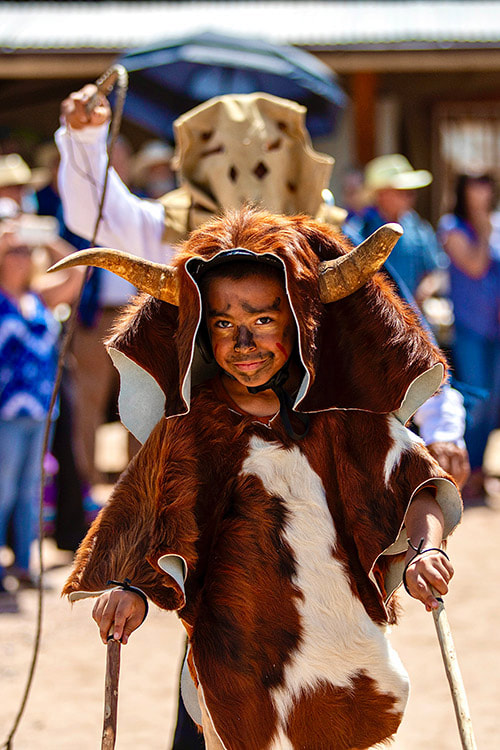 Trevin Archuleta, the 2025 Revival Torito of Los Matachines del Pueblo de Abiquiú, and, behind him, Arsenio Martínez, one of the Mayordomos of Los Matachines de Alcalde and one of the 2025 Revival Abuelos of Los Matachines del Pueblo de Abiquiú. Image Credit: Gustavo Martínez Contreras / Analco Studios. Our culture here in the United States is plagued by so much strife, so much polarity. When AJ stated that his involvement with the Matachine dances brings healing to him and into the community, I was touched. It is so desperately needed, and I imagine that such efforts contribute to the general wellbeing of our society. Maximiño mentioned that the Matachines intentionally dance for the whole world, and that intention reverberates far beyond El Pueblo de Abiquiú. Arsenio Martínez There will be another dance in the winter, but not for Christmas. Some of the folks who would be participating may be out of town on Christmas Eve and Christmas Day. Maximiño explained: “Los Matachines de Alcalde have been paving the runway for us. When we took up this Revival Dance together, they became interwoven with us, and us with them. They will always be there to back us up, and us them! They've given us the tools and support to say, ‘Now it's your responsibility as a community to keep on bringing other people in so that you can have more and more dancers for each of the roles, so that your community continues to absorb it and make it more and more their own each time. Our goal is to get as many people from El Pueblo de Abiquiú as possible to participate long-term, as this is a tradition for all of our community! It's been so beautiful to both witness and participate in this intercommunal and intergenerational endeavor coming to fruition. There's been such intentionality from everyone at each step. We are finalizing and will then communicate the date and time for our winter dance. We are so thrilled to dance again this December, and for all of the dances to come!” MariaElena Jaramillo Arsenio Martínez Maximiño continued: “How can we continue to support one another and uplift one another? There’s such an abundance of beautiful teachings and remembrances that came from these practices that are so nourishing. How can we keep building this momentum so that it can persist beyond our time and into the future generations? What other ways are there to revitalize and keep alive our community’s culture? What other traditional dances and songs from El Pueblo de Abiquiú can we collectively re-learn and re-share? And how do we go about that? What stories do we need to remember so they're not lost? We all have a beautiful and important part to play, and if we choose to meet the blessings that we’re given with respect, humility, integrity, recognition, and love, then we are reminded that these blessings aren't just for us, but for everyone around and beyond us. We can then share them and make them the best we can. That's when the magic happens!” MariaElena Jaramillo This sounds so inspiring, doesn’t it. The dances brought people together, everybody got very involved and gave their best. Everybody is working together. It reminds me that we are not isolated beings but are connected to everything, to other people, to nature, to animals, to trees, and everything in the universe. Our culture isolates people, and they feel threatened and are afraid. But this is just a misunderstanding, because we're all connected. Thank you, Maximiño, AJ, MariaElena, Lily, Arsenio, and everybody else involved with the Matachine dances, for reminding us.
FOR IMMEDIATE RELEASE Media Contact: Jenelle Lovelette, Community Health Worker, Bridge to Health NM 505-591-4200 [email protected] (Espanola, NM, October 28, 2025)— The Espanola Pathways Shelter, Bridge to Health NM, and the Rio Arriba Community Health Council extends an invite to the community for the unveiling of a new mural. The unveiling will be held on Friday, November 7th from 2:00pm-4:00pm, located at 628 Riverside Dr in Espanola. Painted by the established muralist Alejandro Lopez and his team of artists. The artist, Alejandro Lopez, says about the mural “It’s all about having a voice… our old cultures have pretty much been buried under a pile of stuff and we need to unbury, rediscover and give a new voice.” This mural provides an opportunity to build a conversation around economic development for local artists, mentors and apprentices to help beautify Espanola. Fredi, one of the mentees who helped create the mural says, “It’s hard for artists in general to just get work. I think there should be a lot more murals here in Espanola and a lot more opportunities for us because there is not very much to do here. Something positive like this is not only good to me but the whole community.” Bridge to Health NM is overjoyed about the way the community has come together for the creation of this mural. Another mentee, Kwani Lopez, says about the mural “I think it’s really important to view art around places like Espanola because I do think it really does help the community a lot more. Just because a lot of people do struggle here…I think when we are able to do stuff like this it really does bring a lot of people together.” Event: Mural Unveiling: “Turning the Corner in Espanola” Date: Friday, November 7th Time: 2:00pm-4:00pm Address: 628 Riverside Dr, Espanola For more information on the organizations involved visit their websites: Espanola Pathways Shelter: https://www.espanolapathwaysshelter.org/# Rio Arriba Community Health Council:https://www.bridgetohealthnm.org/healthcouncil Bridge to Health NM: https://www.bridgetohealthnm.org/ ### By Monica Devine October has been a busy month. From our home in Abiquiu, we hosted 15 people, members of the Chugach Gem and Mineral Society of Anchorage, Alaska. My husband, a former president of the club, is an avid rock hunter and he has been exploring the local area for years. At selected sites, over a five-day period, the group collected stones of various shapes, sizes, colors and characteristics that only rock nerds would consider consummate treasures. One of my favorites is the fluorescent calcite that produces a brilliant orange color under ultraviolet light. Too cool! On the first day the group explored areas around Abiquiu Lake and Pedernal where they found petrified wood and agates. On day two, they explored an abandoned copper mine near Cuba where they found azurite, malachite and septarian stones. They finished the day with a delicious New Mexican meal at El Bruno’s. The third day brought more surprises, near Coyote, where they found moss agate, and limestones that contained ancient marine fossils. The mica mines entertained on the fourth day, followed by the fluorite dig off of Highway 554. Of course, everyone enjoyed soaking at Ojo Caliente, and visiting the Ghost Ranch museums and hiking trails. We finished up the trip with a boisterous potluck at our home where October birthdays were celebrated, rock specimans compared, and future trips discussed. All in gratitude. Thank you, Earth, for the quiet strength of stone, and thank you, Abiquiu, for your wild and spacious beauty. Many-a-treasure-hunters will return! By Karima Alavi Photos by Karima Alavi and Rafaat Ludin Video by Rafaat Ludin Information on Musicalligraphy provided by Bahman Panahi Iran and Abiquiu wove together artistic traditions on October 4th with a Musicalligraphy performance by Bahman Panahi and Aimee Wilson, director of the Abiquiu-based Unashay Grief Retreat. Bahman travelled from France to Abiquiu as a faculty member of the Reed Society for the Sacred Arts. Their program, titled “Music for the Eyes,” was an event that drew together world renown painters, musicians, and calligraphers. On the evening of October 4, viewers were privileged to watch in silence as Bahman created a painting inspired by songs written and performed by Aimee. This process of drawing upon music to bring forth a work of art is referred to by Mr. Panahi as “Musicalligraphy” or The Art of Writing Sound. What is Musicalligraphy? Musicalligraphy is a unique artistic concept created by Bahman Panahi, master calligrapher, musician, and researcher of the relationships between sound and form. Rooted in both Persian calligraphy and classical musical traditions, Musicalligraphy bridges the visual and the auditory, the written and the performed. It explores how sound can be written, and how lines, points, shapes, and rhythms of calligraphy can resonate like musical notes. The practice is at once a meditation on harmony and a dialogue between two universal languages: writing and music. A live Musicalligraphy performance is a journey where sound and image unfold together. The gestures of the calligrapher become a choreography on paper, while the sound of the instrument, the voice of a singer, or the rhythm, echoes the movement of the pen. Each stroke carries a vibration, each note extends into visual form. The performance becomes a space where audiences witness the transformation of words into music and music into image, blending spirituality, poetry, concentration, and harmony. It is at once an aesthetic experience and a contemplative encounter, inviting each participant to “see the sound” and “hear the line.” The soothing voice of Aimee Wilson inspires Bahman Panahi’s brush to glide across the canvas. You can watch the development of the painting on the large screen that was linked to an overhead camera. About the Artists: Bahman Panahi is a Franco-Iranian artist, master calligrapher and musician. He studied traditional calligraphy and music with great Persian masters and pursued advanced studies in music, eventually creating his own interdisciplinary approach that unites both practices. He earned his PhD at the Sorbonne University, where he explored the connections between music, calligraphy, and visual expression. Based in Paris, he has presented lectures, workshops, and exhibitions worldwide, and his works are held in numerous private and public collections. His creation, Musicalligraphy, embodies his lifelong exploration of the intimate correspondences between visual rhythm and musical vibration. Aimee Wilson has collaborated with artists across different disciplines, bringing sensitivity and depth to performances that combine music, poetry, and visual arts. In Musicalligraphy, Aimee Wilson accompanies Bahman Panahi with her voice and guitar, adding a lyrical and human dimension to the dialogue between sound and calligraphic form
For information on other Abiquiu-based events at Dar al Islam offered by the Reed Society for the Sacred Arts, see my Abiquiu News articles posted on August 8 and 22. For additional information on Aimee Wilson and the Unashay Grief Retreat to take place at Dar al Islam from November 13-16, see my Abiquiu News article posted on September 19. The article includes a link to register for a special fund-raising event on Saturday, November 15 that will support the many outreach programs Unashay offers to northern New Mexico communities. The registration deadline for a five-part meal on that day is Sunday, November 9. Courtesy of Jen Harrington of Luciente, Inc.
THANK YOU, ANDREW! Abiquiu Farmers Market’s season ended the last Tuesday of October, and with it, comes the retirement of our market’s founder and co-manager, Andrew Furse. Eight years ago, Andrew started the market on “a wing and a prayer,” and, in the years since, it has become a beloved community institution. Lupita Salazar will remain as manager with new co-manager Laurie Magoon and the continued sponsorship of Luciente, Inc. Luciente thanks all our wonderful vendors and volunteers. But a special huge thanks to Andrew, and best wishes to him in his new position as instructor at Northern NM College, where his print-making classes are receiving rave reviews. -Jen Harrington for Luciente, Inc. Andrew’s upcoming letterpress class: A Weekend Workshop in Letterpress Greeting Cards November 22-23, 2025 • Saturday & Sunday • 10:00 am - 2:00 pm Fee: $50 • NNMC El Rito campus, El Pueblito Building / Ceramics Studio Instructor Andrew Furse at El Pueblito Bldg will be teaching a weekend workshop Nov 22-23. $50 with supplies included. A Card-Making workshop to help spread messages. It provides a unique, hands-on experience in the art of letterpress printing, focused on creating beautiful and original thank you cards, greeting cards, get-well-soon, sympathy cards, etc. Learn about typesetting and arranging typefaces, images, and other design elements to create unique, one-of-a-kind cards. An engaging, beginner-friendly learning environment with access to vintage letterpress equipment and a variety of materials to help realize your ideas. You'll leave with a set of personalized, handcrafted cards to share with friends and family. SANTA FE — Governor Michelle Lujan Grisham announced today that the State of New Mexico will provide $30 million in state dollars starting Nov. 1 to ensure that low-income children and families, seniors and New Mexicans with disabilities continue to receive food benefits amidst an ongoing federal government shutdown.
The announcement comes in response to the U.S. Department of Agriculture’s decision to suspend Supplemental Nutrition Assistance Program (SNAP) benefits for 42 million recipients nationwide starting Nov. 1. In New Mexico, that’s approximately 460,000 New Mexicans — 21 percent of the state’s population and the highest participation rate in the nation. “The Trump administration and Republicans in Congress have abdicated their responsibility to Americans in need, so we’re stepping up to help New Mexicans,” said Lujan Grisham. “This $30 million in state funding will ensure that families, seniors, and children who need assistance will still be able to put food on their tables in November.” The Health Care Authority will distribute $30 million in state-funded food benefits onto existing EBT cards for eligible New Mexicans on Nov. 1. These state dollars are separate from federal SNAP funding and are intended to help feed New Mexicans through roughly the first 10 days of November. The state’s emergency response includes:
“I’ve heard from constituents who are worried about how they’ll feed their families next month,” said Lt. Gov. Howie Morales. “This $30 million investment means meals for children, groceries for seniors, and hope for families who’ve been abandoned by Republicans in Washington. I commend Gov. Lujan Grisham for taking decisive action.” New Mexicans enrolled in SNAP should expect the state funds announced by the governor by Saturday to equal roughly 30% of their benefit for November; with elderly and disabled recipients receiving at least $100. Families can continue using funds already loaded on EBT cards. New Mexicans should continue applying for benefits at YES.NM.GOV, by calling 1-800-283-4465, or visiting any HCA Income Support Division office. SNAP, established under the Food Stamp Act of 1964, is the nation’s largest anti-hunger program, serving approximately 42 million Americans annually. The program also generates economic activity, producing up to $1.80 in local economic benefits for every SNAP dollar spent. More specifically, SNAP provides food benefits to low-income families so they can afford nutritious meals essential to health and well-being. New Mexico typically receives $80 to $90 million in SNAP benefits each month from the federal government. With the Trump administration’s decision to abruptly halt this benefit—despite the availability of a roughly $5 billion federal SNAP contingency fund—states are scrambling to ensure residents in need don’t go hungry. “Hunger knows no party lines. Every New Mexican needs access to food, and I’m grateful the Governor is taking immediate action,” said Health Care Authority Secretary Kari Armijo. “We will do everything in our power to help New Mexicans navigate this uncertainty.” USDA’s own “Lapse of Funding Plan” issued in September stated that “multi-year contingency funds are also available to fund participant benefits in the event that a lapse occurs in the middle of the fiscal year.” This interpretation is consistent with prior practice, including during the 2018-2019 government shutdown, and as recently as a few weeks ago in the USDA Lapse of Funding Plan, which the agency has since removed from its website. Even after accounting for administrative costs, more than $5 billion should remain available — a substantial share of the approximately $8 billion needed for a full month of benefits nationwide. “Governor Lujan Grisham’s emergency funding demonstrates the leadership and moral clarity that New Mexicans deserve. We will not stand by while the federal administration chooses to let our families, children, seniors, and veterans go hungry,” said Senate President Pro Tempore Mimi Stewart (D-Albuquerque). “SNAP is a lifeline for families who are struggling, not a bargaining chip. New Mexico is not going to allow the Trump Administration to play political games that put children and families in our state at risk of starvation,” said New Mexico House Speaker Javier Martínez (D-Albuquerque). “Once again, we’re coming together to step up for our friends and neighbors when they need it most, and once again, we’re showing the rest of the country the way forward.” “New Mexico is doing all it can to help alleviate suffering that Republicans in Washington are inflicting on our communities, but no state—including New Mexico—can afford to bridge this massive funding gap indefinitely,” Lujan Grisham said. “It’s up to Congress and President Trump to do what’s right and restore this critical nutrition funding that millions of American rely on every day.” ‘People are scared’ 10 days ahead of cuts affecting one in five New Mexicans, directors say By PATRICK LOHMANN Courtesy of Source NM In a little over a week, more than 450,000 New Mexicans will likely lose their food benefits amid the ongoing federal government shutdown.
In the state with the nation’s highest rate of Supplemental Nutrition Assistance Program reliance, the abrupt cancellation of SNAP nationwide will mean 250,000 households could go hungry and grocery stores would lose significant revenue, local food bank representatives told a legislative committee Wednesday in Las Cruces. “People are scared. They don’t know how they’re going to feed their families. And frankly, if the shutdown does go on any longer, we are looking at a public health crisis,” Jason Riggs, advocacy director of the Roadrunner Food Bank, said Wednesday. On Oct. 10, SNAP administrators at the federal Agriculture Department warned states, including New Mexico, that shortfalls left SNAP without adequate funding in November. As a result of the shortfall, the department ordered states not to submit client files to statewide SNAP vendors that they’d need to approve SNAP purchases in November. HCA Secretary Kari Armijo said on Oct. 15 that the state’s interpretation of the USDA order was that it effectively revoked SNAP retailers’ authorization to approve purchases, “so folks with SNAP benefits on their cards would not be able to access those benefits starting in November,” she said. Still, she reported that the state was seeking additional clarity from USDA. Marina Pina, a spokesperson for the state Health Care Authority, which oversees SNAP, did not immediately respond Wednesday to Source New Mexico’s request for an update on the SNAP cuts. Riggs said Wednesday much remains unknown about how the nation’s food system will operate as of Nov. 1. For example, whether electronic benefit cards will still work in 10 days, or whether stores will still accept them, is an open question. “I was in a national meeting of hunger advocates yesterday and a lot of states are reporting just chaos and confusion,” he said. About 1,700 retailers statewide accept SNAP payments for groceries, according to state figures. More than half of them face high risk of significant revenue reductions, including closure, according to a recent Source analysis of Center for American Progress data. Amid the uncertainty, Riggs and other food bank leaders warned that one thing is clear: They do not have anywhere near the capacity, especially without much notice, to make up the losses people will experience without SNAP. SNAP currently provides nine times as much food assistance as food banks, Riggs said. “Food banks cannot make up for that kind of gap, especially not by November,” he said. Jill Dixon, director of the New Mexico Association of Food Banks and the executive director of The Food Depot, added that the state’s five food banks are rapidly preparing to do what they can. That means starting pop-up food distributions; buying more food and food storage; and activating volunteers. Their response is “much like we did in the pandemic,” she said, “when you saw food banks step forward and rise and provide for people during closures and shutdowns.” The Health Care Authority is also trying to expedite the delivery of roughly $8 million in funding for food banks lawmakers approved in the special legislative session earlier this month, but that’s still far less than $90 million in SNAP benefits the state expected to administer in November. |
Submit your ideas for local feature articles
Profiles Gardening Recipes Observations Birding Essays Hiking AuthorsYou! Archives
October 2025
Categories
All
|
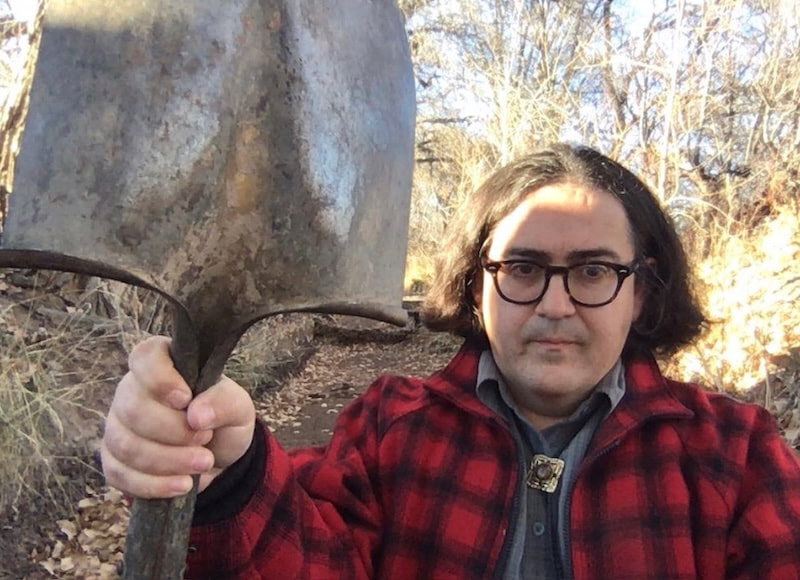

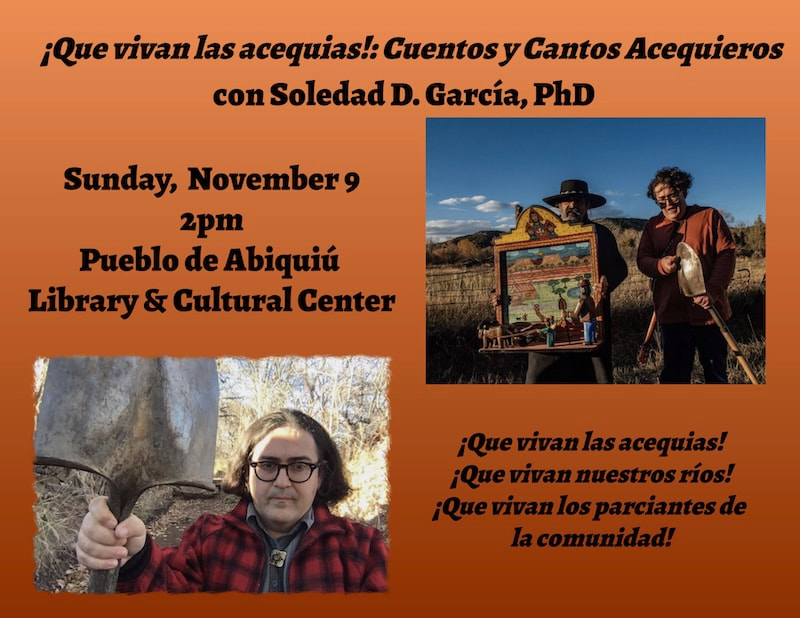
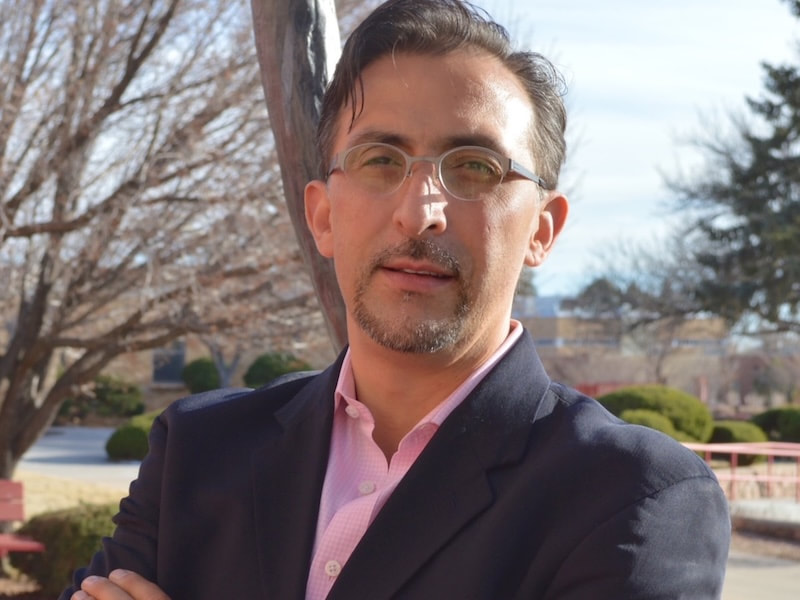

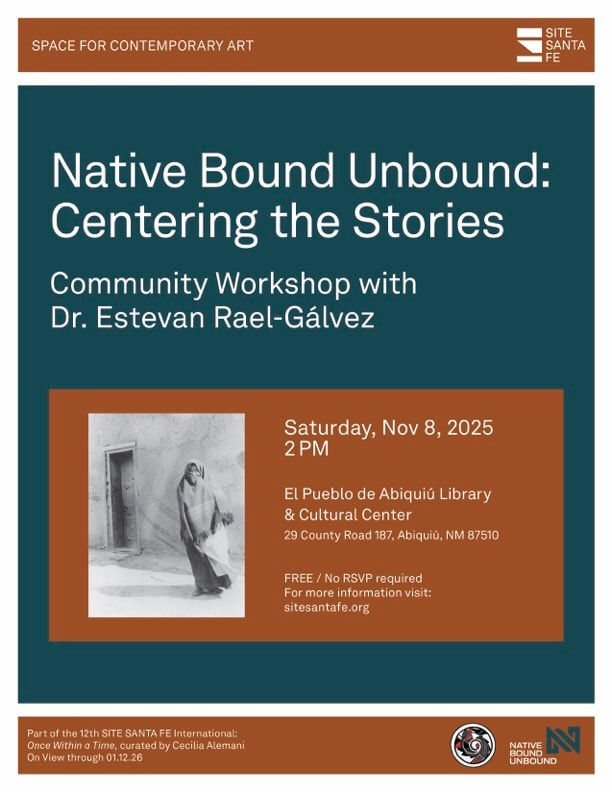




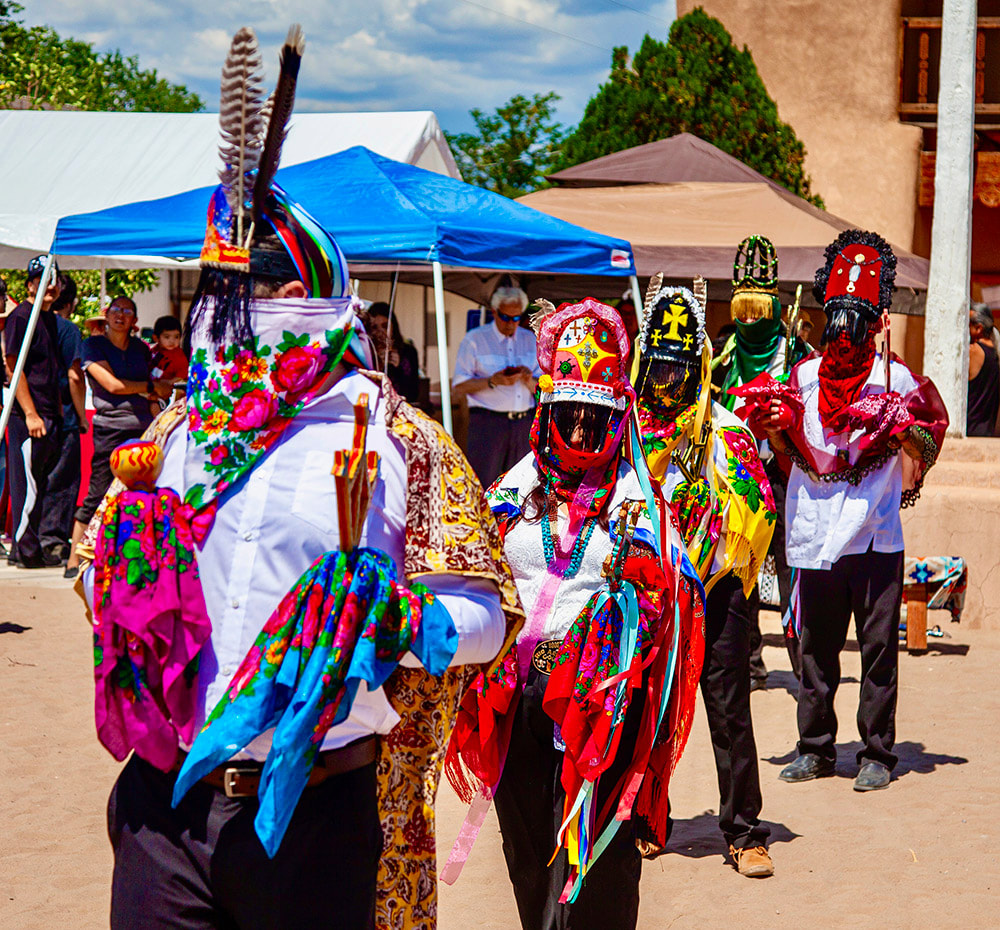
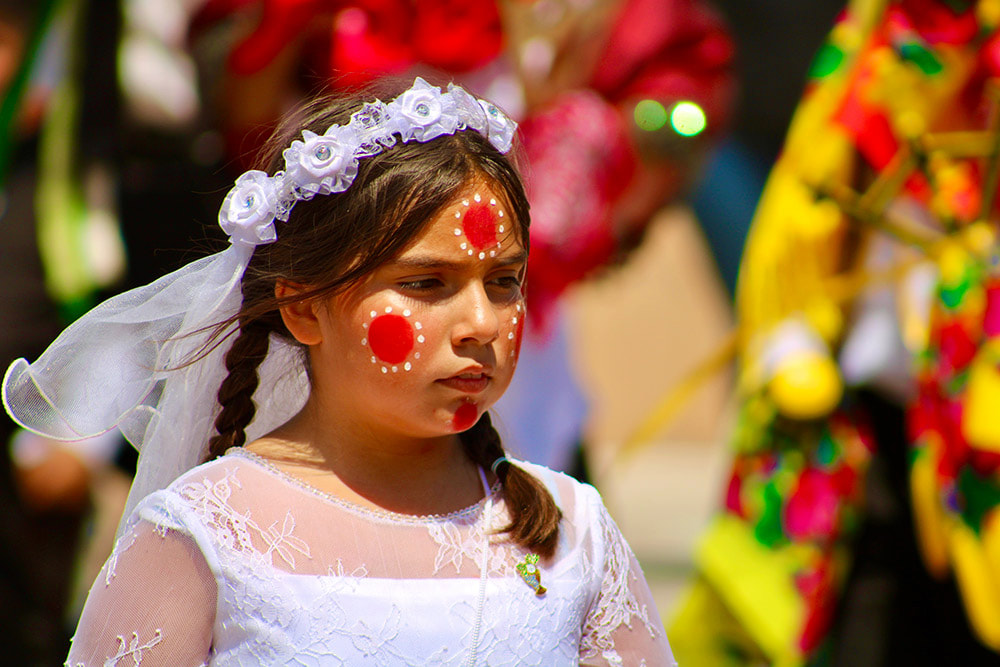
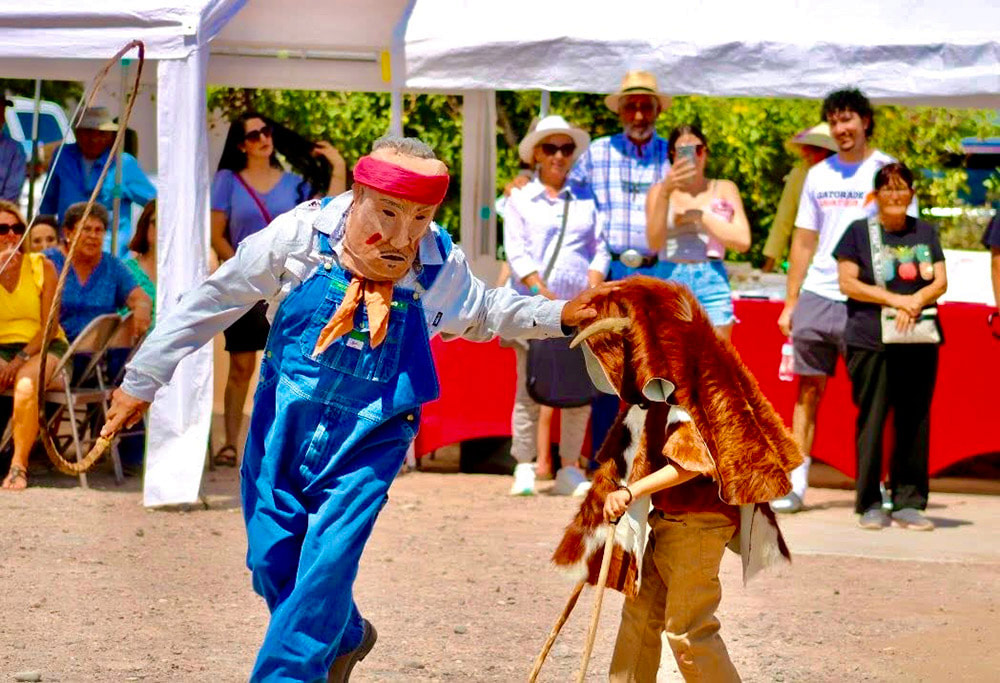

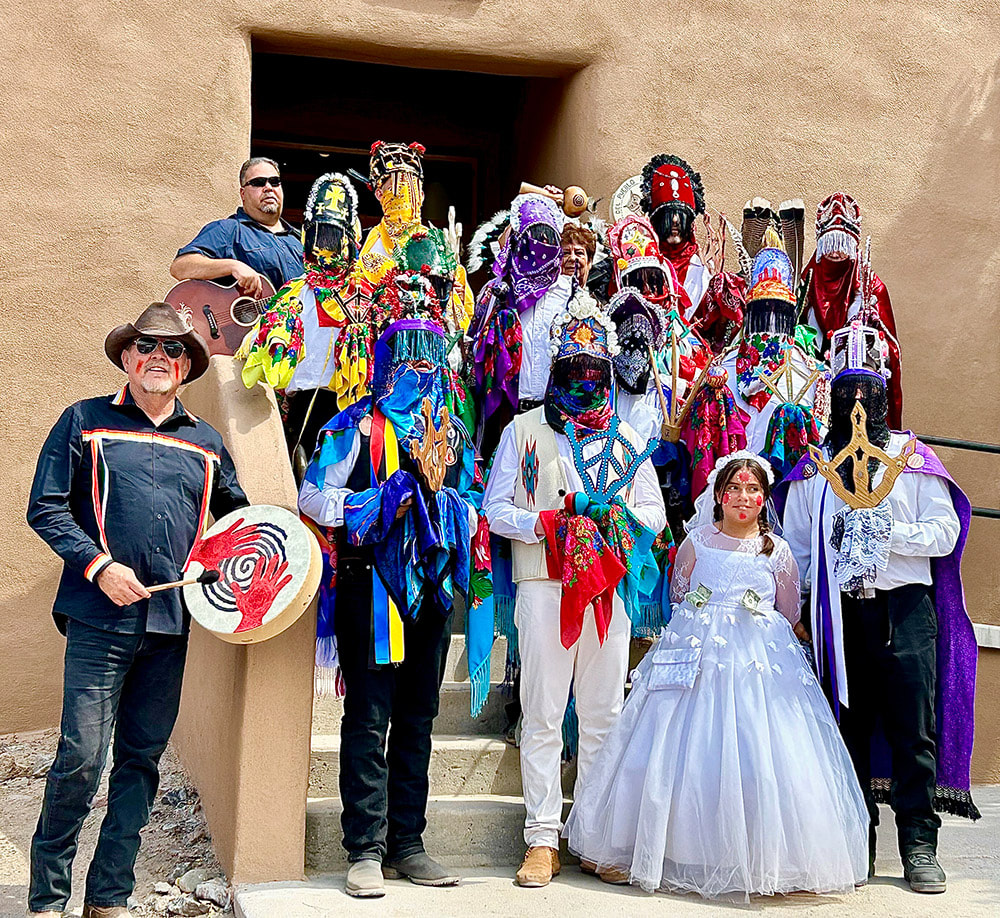

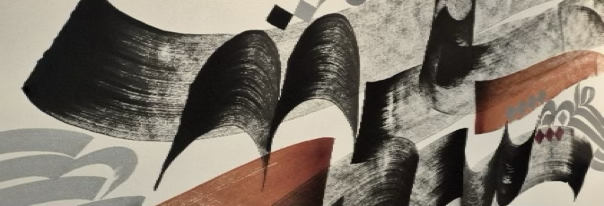
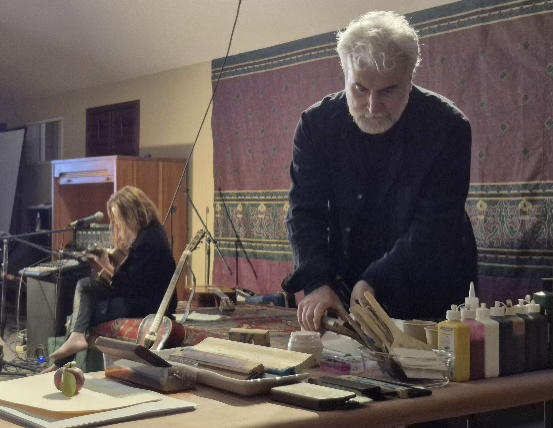
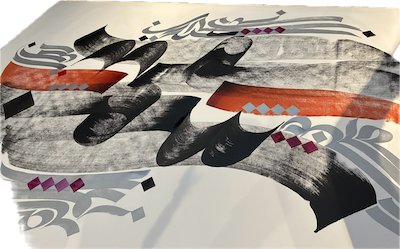


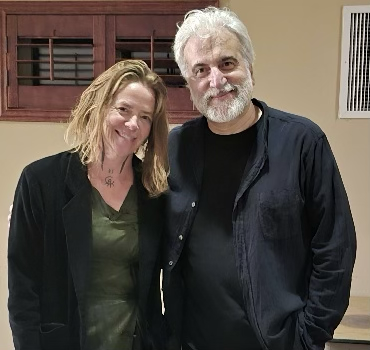
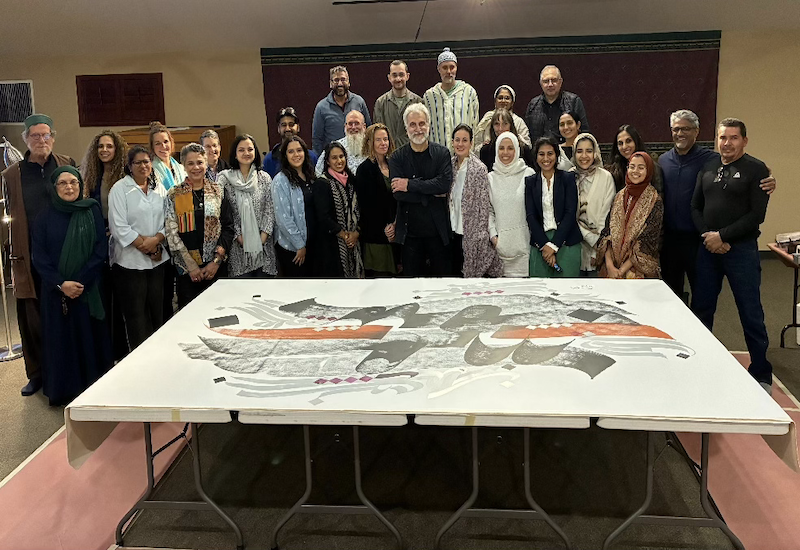

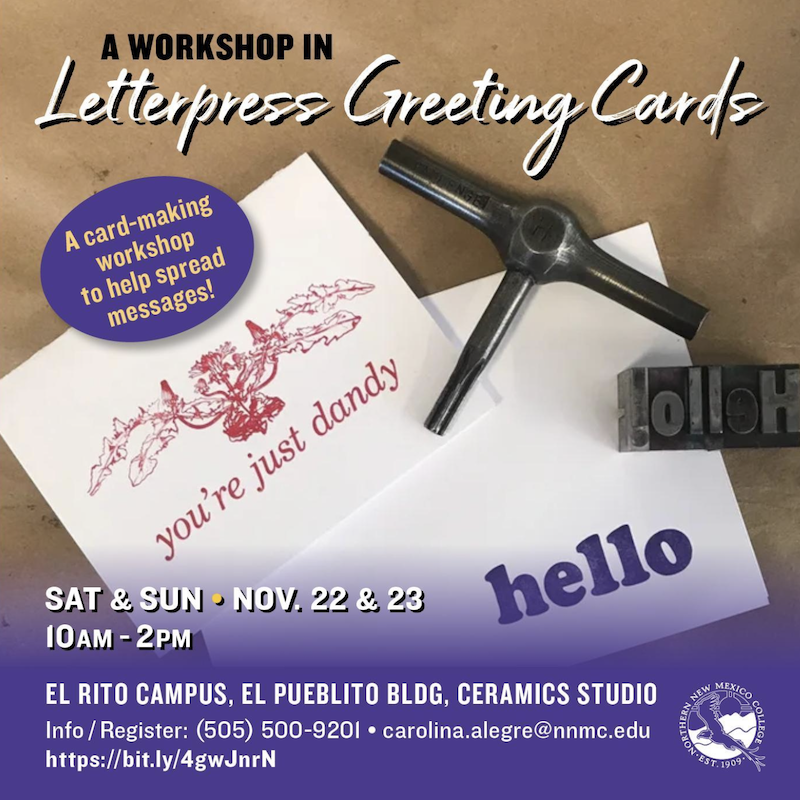


 RSS Feed
RSS Feed